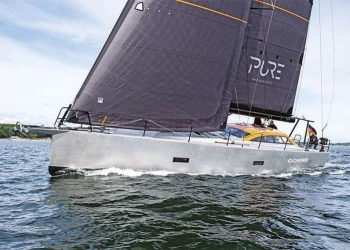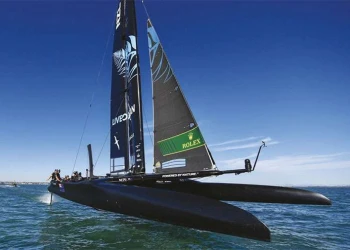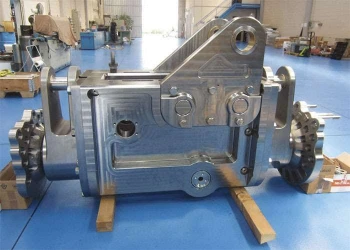
The stand-out performer in Cape to Rio Race was the Balance 526 Norhi
The stand-out performer in Cape to Rio Race was the Balance 526 Norhi
Balance Catamarans is a fast-growing brand of comfortable ocean cruising cats, built to a strict ethos, that sail remarkably well. Here’s how they achieve that elusive balance…
The stand-out performer in this year’s Cape to Rio Race was the Balance 526 Norhi, which took line honours and finished more than 24 hours ahead of a close rival that was widely assumed to be faster. It was a remarkable result for a comfortable 16-metre cruising cat, not far off the pace of the 2014 winner, the VOR70 Maserati.
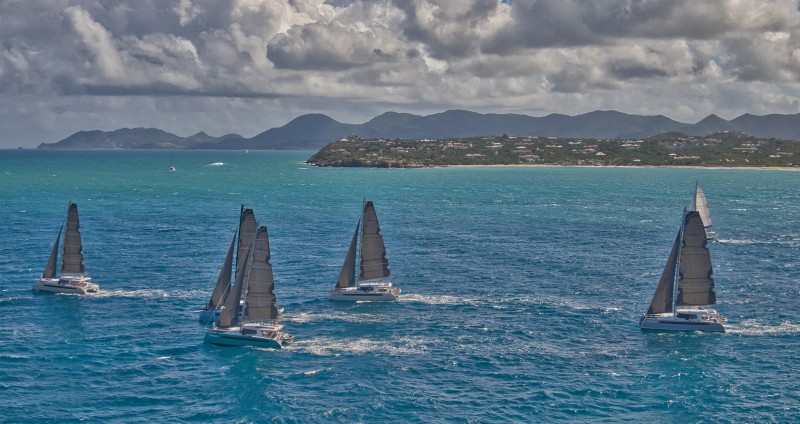
Norhi’s win may have surprised some sailors in Europe, but not in the US where Balance Catamarans has won major awards and earned an excellent reputation, not least for performance. Nor was it a surprise in South Africa, where the boats are built and are widely known to have a first class pedigree.
Balance was established in 2013 by Philip Berman, a Hobie Cat world champion and author of the bestselling book Catamaran Sailing From Start To Finish. Subsequently a successful offshore multihull racer, an accomplished ocean cruiser and a leading yachtbroker for several decades, Berman was among the first to notice a gap in the market.

There were comfortable cruising cats designed for charter, which weren’t a lot of fun to sail, and high-performance boats designed for racing, which weren’t fun for a family to live on and couldn’t carry a cruising payload – but there were very few boats between those two extremes. ‘I kept coming back to a lingering question,’ Berman explains. ‘Why aren’t there highperformance catamarans that still offer onboard comfort and liveability?’
Balance was founded to fill that gap and there are several key factors in its burgeoning success. The concept for the boats is a distillation of Berman’s experience and knowledge, as an expert catamaran sailor but also as a specialist multihull broker who sold more than a thousand boats in his previous job. The naval architecture is by Anton du Toit, renowned for his high-end custom cruising cat designs, working closely with Berman. And the build quality is a testament to the composite skills and craftsmanship of some of the leading boatbuilders in South Africa, which has a world class reputation for multihull production.
The Balance brand began with a partnership between Berman and the Paarman brothers – Jonathan, Mark and Roger – who had recently set up their own shipyard, Nexus Yachts, to build fast cruising catamarans at St Francis in the Eastern Cape province of South Africa.
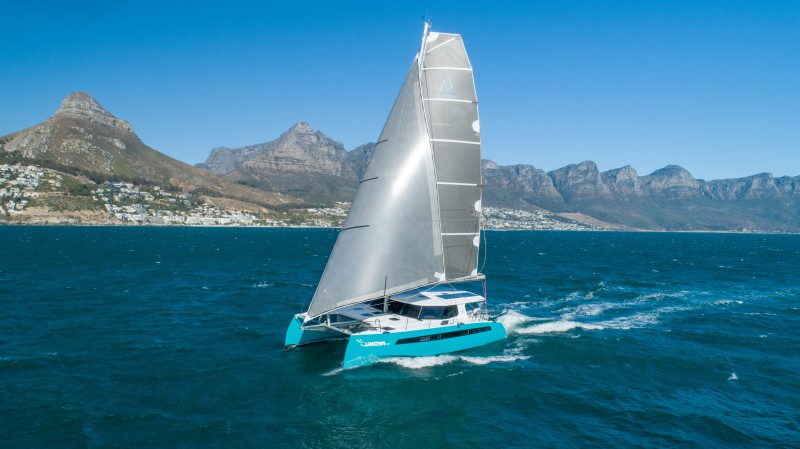
St Francis is famous for its surf break, which featured in the iconic film Endless Summer and the Paarmans are legends in the surfing community, especially Jonathan who was one of the world’s top ranking big-wave surfers for many years, as well as a highly regarded builder of boards and boats. His brother Mark, meanwhile, had a successful career in the tough St Francis-based squid fishing industry. They had surfing in common with Berman and there was also a Hobie Cat connection, as Jonathan had built the boats for the Hobie World Championships in 1979, which were staged in South Africa – and that was where Berman won his first world title.
‘Jon Paarman and I were surfers first, sailors second,’ Berman says. ‘Beach rats. We were drawn to Hobie Cats and the Hobie lifestyle because Hobie designed them to both sail and surf. Paarman and I did not learn to sail at a yacht club, we were self-taught like so many of those who bought Hobie Cats. Hobie Cat regattas took place off beaches. It was an unpretentious, casual, fun, laid back egalitarian lifestyle. Hobie cats did not have to be manicured like most racing boats. They were durable, tough, and could handle the abuse of hard sailing and surfing. Paarman was living the Hobie lifestyle in South Africa while I was living it in Southern California. We lived a world away from each other but danced to the same Hobie beat.’
Before they discovered those strands of common heritage, it was the quality of the Paarmans’ first boat, exhibited at Annapolis Boat Show, that sparked Berman’s interest. ‘I knew I had to design a catamaran from the ground up, with a trusted design partner, and to have it built by serious sailor/builders with deep roots in composite catamaran fabrication,’ he explains. ‘When I met them and saw the craftsmanship of the first boat they built I knew instantly we would be a good fit for each other. And Anton Du Toit and I hit it off together immediately. He was a listener and a collaborator.’
Balance Cats’ key concepts
Phillip Berman and Anton du Toit explain the principles that define the brandFirst sailing must be made as easy as possible. Far too many performance oriented cats are overly complicated, just to achieve marginal performance gains. Keep it simple is a driving mantra for us.
Second, a yacht must be designed and crafted to sail in the worst weather and to offer superb protection at the helm no matter how rainy or cold it may be – or how hot and sunny. Sight lines from helm stations should offer 360-degree visibility.
Third, sailing must be as comfortable as possible, under way or at anchor. A cruising yacht must sail well on all points of sail and offer the smoothest possible ride in a wide range of sea states. A well designed cat must also have superb bedrooms, galley, heads and showers, and carry a considerable amount of cabinetry to cleanly stow clothing and the many things we carry on a live-aboard boat.
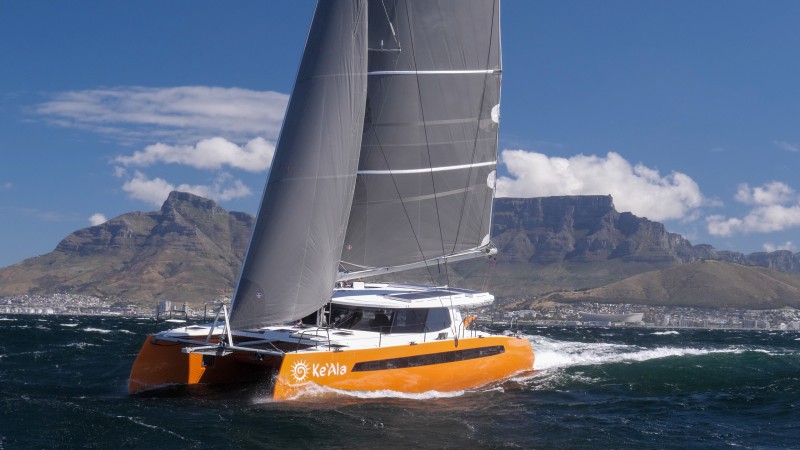
Finally, a well-built catamaran is a thing of beauty. There’s nothing more frustrating than to own a yacht of poor quality. A lower price is quickly forgotten as you suffer the stings of shoddy craftsmanship.
We use wave piercing bows with hulls that widen aft and flare up considerably from the waterline. Our cats are beamier than most to allow larger sailplans. They have good bridgedeck clearance without undue freeboard which adds windage and poorer performance to windward.
Our designs’ performance at medium and higher speeds has been meticulously optimised through careful allocation of volume in the hulls. The rocker is adjusted and shaped for optimal interaction and handling across various sea states. These enhancements allow the boat to sail with minimal disturbance and turbulence, giving a smooth and efficient sailing experience.
Using our optimised foil sections and planforms, our high-aspect rudders and daggerboards offer exceptional sailing performance in upwind conditions. When running downwind and surfing in brisk conditions with the boards raised three-quarters they steer and track superbly.
All Balance Catamarans share a strong, distinctive DNA that stems from Berman’s concepts and draws on the experience of Du Toit, Jonathan Paarman and others. ‘Most critically we involve the build teams to discuss the design and how it impacts the actual tooling and fabrication process,’ Berman says, ‘because it is one thing to have a pretty boat on paper, quite another to build it well and in the most cost effective fashion.’
On the water, Balance Catamarans achieve the elusive combination of excellent performance in a broad range of wind and sea conditions, on most points of sail, with good payload-carrying ability. Upwind VMG is a particular strength, thanks to two main factors. Deep daggerboards allow these boats to point at least seven degrees higher than most other cats while maintaining good boatspeed, and careful weight distribution reduces fore-and-aft pitching to a minimum.
Another factor in the brand’s success is a game-changing innovation: the VersaHelm. ‘We were the first to offer this 90-degree pivoting helm station,’ Berman explains. ‘It enables our customers to sail up top in fair weather, with four corners sight lines of both bows and sterns, and offers the same four corners visibility, along with total weather protection, when sailing down below. It was a Balance innovation that arose from our desire to make sailing more comfortable in any sort of weather and to make short-handed sailing easier all around.’
Strong demand has led to rapid expansion in the last few years and, according to Berman, Balance has been the fastest growing catamaran brand in the world. The St Francis yard builds three key models in the range: the 526, 580 and 620. These are highly bespoke, hand built by master craftsmen at a rate of seven boats per year.
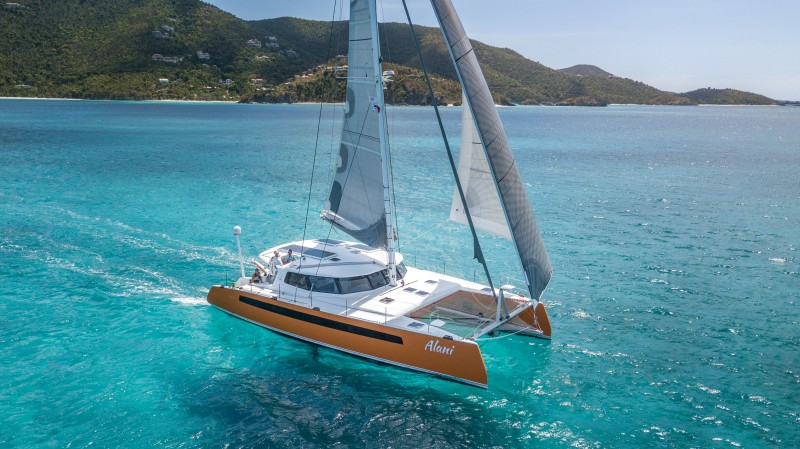
The Paarmans are content with the scale of their operation, which wouldn’t have been easy to expand in St Francis, so to grow the brand Berman licensed the creation of a new company, Balance Catamarans Cape Town, with local shipyard owner Mark Delany as director. ‘He not only had great catamaran building skills, but the ability to build the additional 20 boats a year we required,’ Berman says. ‘To bring the price of the 442 and 482 into reach for more consumers we tooled them to be crafted more quickly, in larger volumes with less customisation, and Mark retrofitted a massive factory space in Cape Town port to fabricate them.’
Despite the obvious differences between the Cape Town and St Francis yards, the boats’ construction and build quality are broadly similar. ‘Every Balance catamaran is foam cored, carbon reinforced and vacuum bagged,’ Berman explains. ‘Many of our parts are infused, all our doors are custom made with carbon, all bulkheads are composite and hand laminated to the hulls, every yacht is spray finished and all of our cabinetry is custom-made with real wood veneers in foam core panels. The number of labour hours that go into a Balance catamaran far exceeds nearly all catamarans built in Europe.’ Across the entire fleet, the standard-spec boats are lighter in displacement than most other brands and owners have a wide range of options to achieve further weight reductions by increasing the amount of carbon fibre in their boat’s construction.
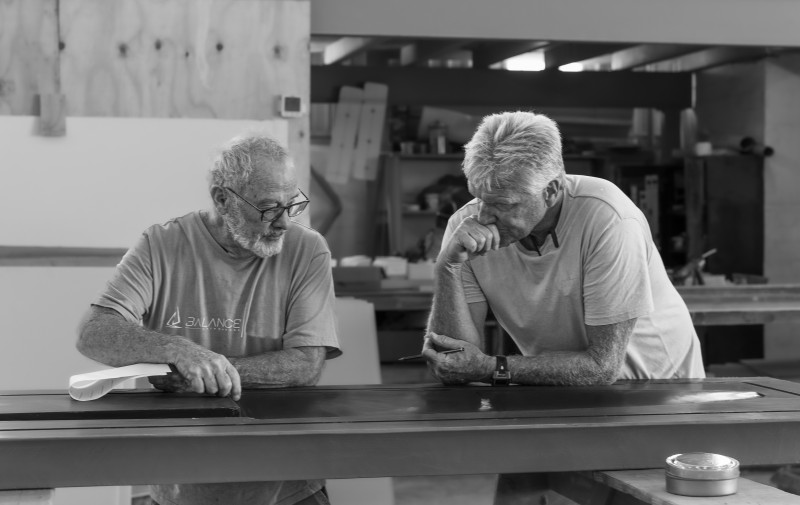
Delany’s core management team in Cape Town has a depth of experience to match the Paarmans’, including secondgeneration multihull boatbuilders like Peter Dean from Dean Catamarans, who brings large-scale procurement expertise and heads up customer liaison, and Mark Wehrly from Matrix Yachts, whose experience from large, high-performance custom cat projects like Zingara and Akasha is now focused on delivering additional weight savings and build quality refinements in the Cape Town operation. Major improvements in smallpart mouldings have been achieved, with the weight of air conditioning ducts reduced from 12kg to 2kg, for example, and sliding cabin doors from 17kg to 8kg.
So what’s next for Balance Catamarans? Alongside the recently scaled-up production of the two smaller models, the big news from Cape Town is that a spectacular, fully bespoke new flagship – the Balance 750, whose features include a flybridge and a forward cockpit – is now also in build.



